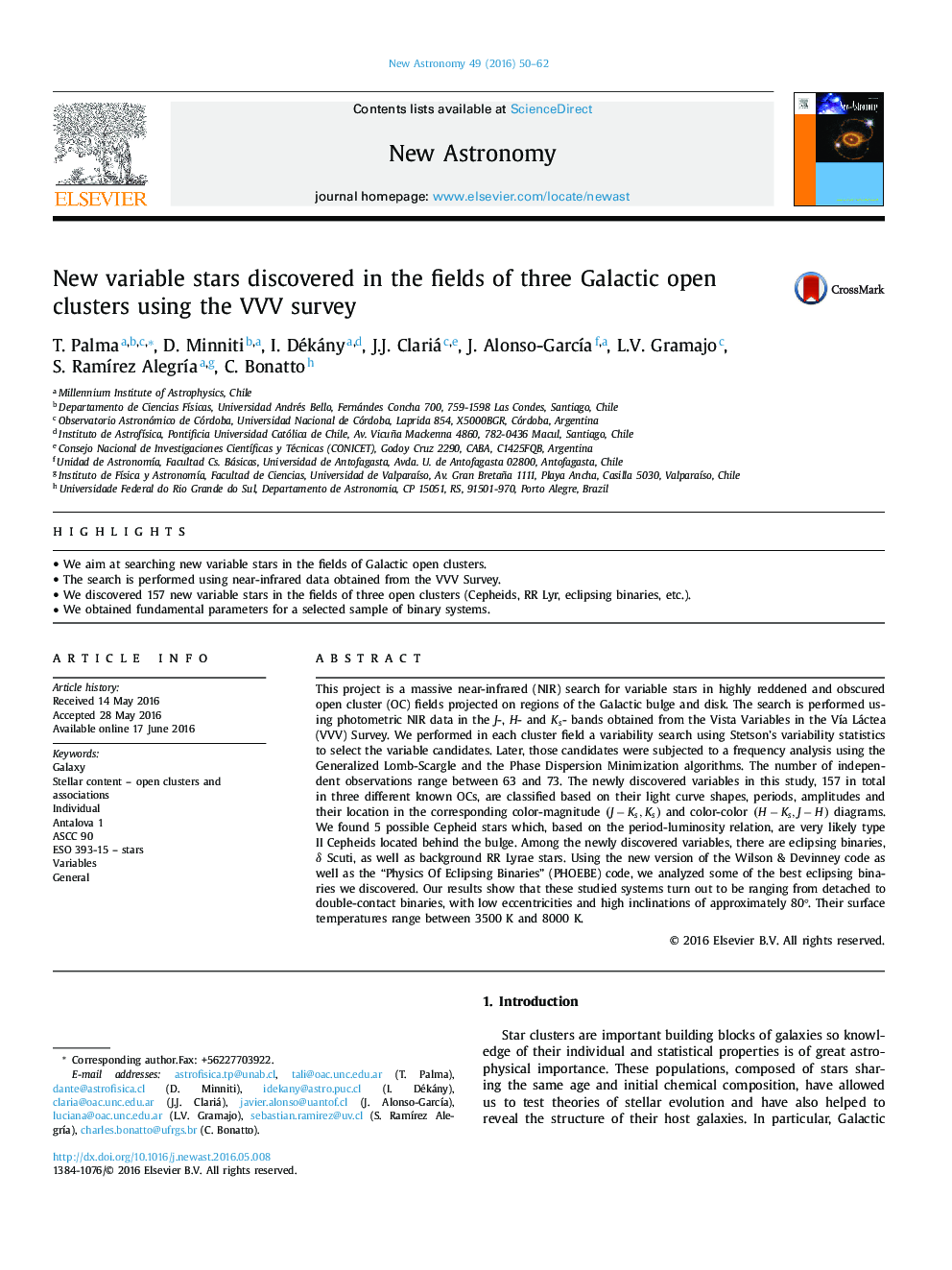| Article ID | Journal | Published Year | Pages | File Type |
|---|---|---|---|---|
| 1778728 | New Astronomy | 2016 | 13 Pages |
Abstract
This project is a massive near-infrared (NIR) search for variable stars in highly reddened and obscured open cluster (OC) fields projected on regions of the Galactic bulge and disk. The search is performed using photometric NIR data in the J-, H- and Ks- bands obtained from the Vista Variables in the VÃa Láctea (VVV) Survey. We performed in each cluster field a variability search using Stetson's variability statistics to select the variable candidates. Later, those candidates were subjected to a frequency analysis using the Generalized Lomb-Scargle and the Phase Dispersion Minimization algorithms. The number of independent observations range between 63 and 73. The newly discovered variables in this study, 157 in total in three different known OCs, are classified based on their light curve shapes, periods, amplitudes and their location in the corresponding color-magnitude (JâKs,Ks) and color-color (HâKs,JâH) diagrams. We found 5 possible Cepheid stars which, based on the period-luminosity relation, are very likely type II Cepheids located behind the bulge. Among the newly discovered variables, there are eclipsing binaries, δ Scuti, as well as background RR Lyrae stars. Using the new version of the Wilson & Devinney code as well as the “Physics Of Eclipsing Binaries” (PHOEBE) code, we analyzed some of the best eclipsing binaries we discovered. Our results show that these studied systems turn out to be ranging from detached to double-contact binaries, with low eccentricities and high inclinations of approximately 80°. Their surface temperatures range between 3500 K and 8000 K.
Keywords
Related Topics
Physical Sciences and Engineering
Physics and Astronomy
Astronomy and Astrophysics
Authors
T. Palma, D. Minniti, I. Dékány, J.J. Clariá, J. Alonso-GarcÃa, L.V. Gramajo, S. RamÃrez AlegrÃa, C. Bonatto,
